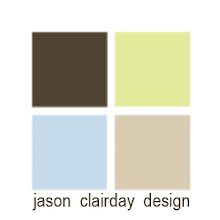Architectural panels from either Veritas or 3-Form have been very popular in commercial design for a long time, but their largest growth market is in residential design. Some of the applications where they are most often used are in staircases, room dividers, railings and back splashes. They are unique because they come in 4’x8’ sheets and can then be cut to size on site, they can be back-lit (as in a kitchen or bar area), and they can provide some visual interest to a staircase. They are relatively inexpensive, but can really add a punch!




One of the coolest things to add to your home is a rolling or stationary ladder. Now, this is not a new concept. We have all seen movies where the old stuffy library room in the manor house has a ladder that rolls around to reach the highest books. Right? But what you don’t realize is that this is making a HUGE comeback and is not expensive at all. I love working with the company Alaco (A Ladder Company – clever, huh?). They have everything from custom staining, to modern and contemporary, to very old-school. Having said all of this, you do need to have higher ceilings and/or an application for this. If you have always wanted a reading room, and you have 9’ ceilings or higher, than this could work for you. It can work on just one wall, or go around a corner – simply brilliant!


Now, the next area that I get excited over is stone and tile. There are a few rules here, and I am now going to preach to you:
1. Bathrooms should NEVER be carpeted – ever. It is not hygienic, and impossible to keep clean. You should have a tiled floor of some kind.
2. Foyers and Kitchens should have hardwood at the very least, although I prefer tile or stone. Again, it is more hygienic, will wear better and last longer, and generally is more appropriate.
3. Kitchen and Bath counter tops should be in stone, either a composite (Caesarstone or Silestone) or natural (granite, marble or other natural stone). They last forever, are the most resistant to stains and burn marks (if properly taken care of), and add significant value to your home.
4. The back splash should always be tiled somehow. This costs virtually nothing and really helps maintain the look of your kitchen. It is easy to clean after cooking and helps keep your kitchen looking fresh.
Here are some wonderful examples from Ideal Tile and Stone Source (a to-the-trade showroom with locations across the country with some VERY different materials).









Last but not least, is wallpaper. Now, I know what you are thinking: “Wallpaper? Really? My grandma had this hideous wallpaper all over her house! Yuk!”. This is not your grandma’s wallpaper. Wallpaper has become decadent, exclusive and wonderful. It can add instant bling, texture or pattern to room. It is often a wonderful addition to a home with little artwork as an accent wall. I love using wallpaper on one wall to really pack a punch! Now, there are papers with exquisite texture to use in bathrooms, without running the risk of mildew. Some of my favorites are Innovations USA, Carnegie, Marburg (especially the Ulf Moritz collections), Maya Romanoff and Minakani. Go nuts!








So, I hoped that this has given you some insight as to what is available to really spruce up your home on a more permanent level. Sometimes it all about practicality, but sometimes it is really all about the “Wow” factor. This is especially true when trying to sell your house. Sometimes a few thousand dollars goes a long way to give your home the edge over your neighbors – not to mention it is really fun to live in if you are not moving!



















